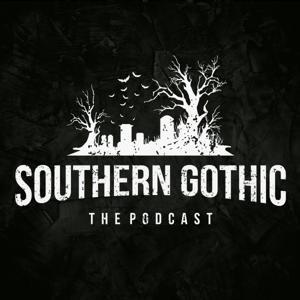In Podcast 49 we talk about some of the coolest – the Palace Streetcars.
Double-Truck Palace Streetcars
Part 3 of our 4-part series on early streetcars in New Orleans presents the Palace streetcars from the turn of the 20th century. Manufactured by the St. Louis Car Company, the semi-convertible, double-truck, Palace cars picked up their name because of their smooth ride. The local transit company, New Orleans City Railway Company, had a relationship with the St. Louis Car Company. NOCRR purchased their first electric streetcars from them. By 1901, NOCRR needed larger streetcars. So, they turned again to St. Louis. The company sold them their semi-convertible. The city took delivery on the Palace cars starting in 1902.
The Pod
Palace Semi-convertible Streetcars
New Orleans City RR Company 043, one of the first Palace streetcars delivered in 1902. These cars were originally open-vestibule. You can see the motorman standing at the controls outside of the cabin. The Palace cars had wood frames with a steel underframe. The grates over the lower part of the windows blocked passengers from putting their hands outside.
New Orleans Railway & Light Company (NORwy&Lt) 025 was one of the original Palace cars. This John Tibule Mendes photo shows 025 running on the Dauphine line on Mardi Gras, 1918. The company re-built the Palace cars later that year, closing in the end vestibules and making other modifications.
Blueprints
Blueprint of the “1918 Remodeling” of the Palace cars by NORwy&Lt. At this time, the company also re-numbered the cars. They assigned these cars 600- and 700-series numbers.
St. Louis World’s Fair 1904
St. Louis Car Company designed the Palace cars for use at the Louisiana Purchase Centennial Exposition in 1904. The exposition grounds featured a 10-mile streetcar route around the perimeter. Palace cars brought visitors around the exhibits and pavillions.
Zoom-in of the exhibition map showing the “Intramural Railway.”
Canal/Esplanade Belts
The first Palace cars ran on the Canal Line. When more cars arrived in 1903, they went to work on the Esplanade line. The two lines began “belt” service. We outline the route in Podcast Episode 10, “Riding the Belt.”
This 1918 image shows NORwy&Lt 630, running on the Canal Belt. The streetcar heads down City Park Avenue, towards Bayou St. John. It turns left at the bayou, onto Wisner, then a quick right, onto the Esplanade Avenue bridge. From there, the line continued down Esplanade to N. Rampart.
This Franck Studios photo shows a Palace streetcar on Esplanade Avenue. The company ran this streetcar to document the clearances on the neutral ground, in response to a lawsuit. The car’s roll sign is set for “WEST END.” Date: 8-October-1921.
This photo shows the remains of a Palace car burned on Canal Street 7-July-1929. The company brought out a single streetcar operated by management employees. Motormen, conductors, and supporters turned it over and set it afire.
Books
Stretcars of New Orleans by Hennick and Charlton
The Streetcars of New Orleans: 1964–Present
New Orleans: The Canal Streetcar Line
Four Ways to Support NOLA History Guy
Buy my books! Edward Branley is the author of six books on New Orleans history. They’re available from local booksellers and all the usual online suspects.Book NOLA History Guy to speak at your event – Edward speaks to groups ranging in size to local groups like Kiwanis and Rotary to major conventions and trade shows.Buy me a coffee on Ko-fi dot com. I just love this concept as a way to say thank you/tip creators you enjoy. Our idea of monetization is buying books and having us come to speak. If you see me at a coffee shop, stop and say hi. Otherwise, I’ll raise coffee cup to you if you treat me.Become a patron. Yes, we’re on Patreon. A lot of creators use the platform for direct monetization, and that’s great for them. We don’t have “exclusive content” for patrons. Still, if you think our history stuff is worth a dollar a month, go join!The post Podcast 49 – Palace Streetcars appeared first on Edward Branley - The NOLA History Guy.



























